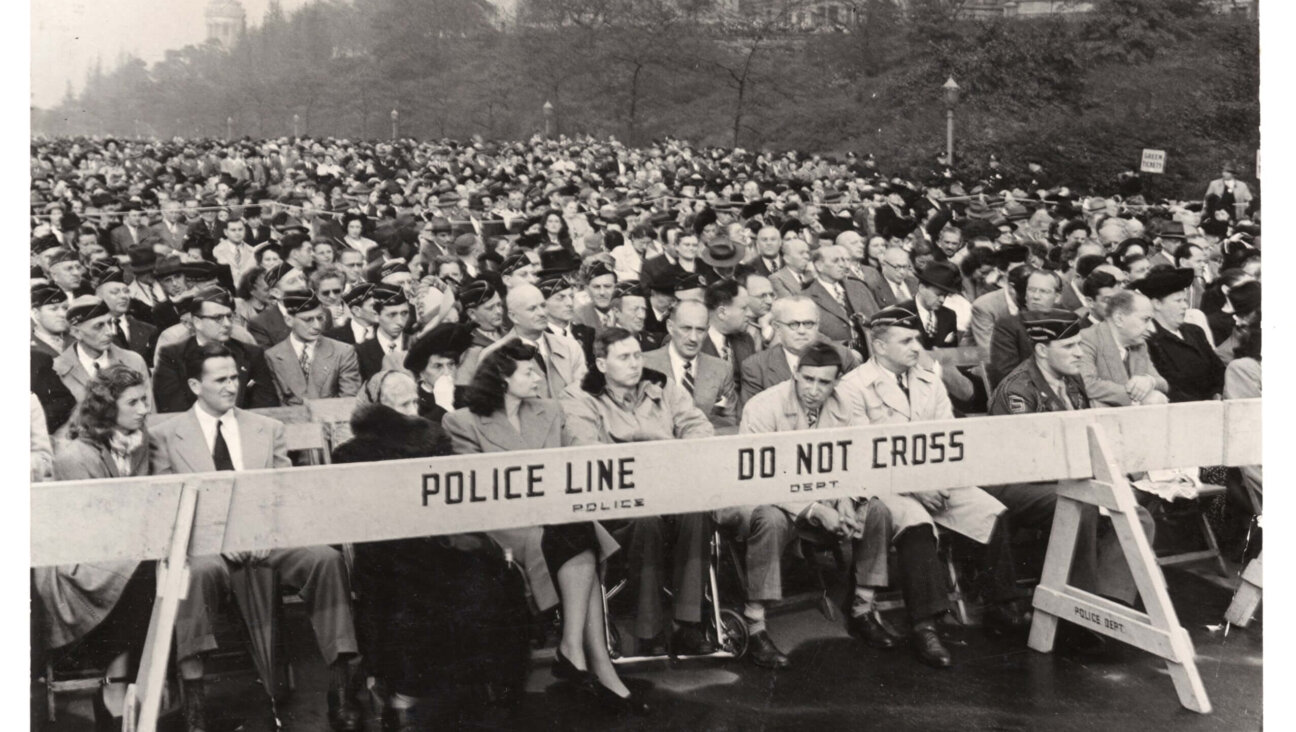Even 1,000 Years Ago, Jerusalem Was a Hotbed of Creativity and Conflict

Chasse of Ambazac: From the Treasury of Grandmont Limoges, ca 1180-90 Image by Region Acquaintaine-Limousine-Poitou-Charentes Photograph by Philippe Riviere
Like the Metropolitan Museum itself, the new exhibit “Jerusalem, 1000-1400: Every People Under Heaven” is meant to be an oasis of sorts, a respite from whatever struggles and conflicts may be happening outside its doors.
Or at least that’s the intention.
In presenting 400 years worth of medieval art from Jerusalem, the exhibit’s curators Barbara Drake Boehm and Melanie Holcomb seek to challenge our preconceptions and remind us that there’s more to the city under discussion than a history of war, political struggle, environmental disaster and religious conflict.
“Jerusalem seems destined to be thought of as hosting ongoing conflict,” said the Met’s director and CEO Thomas Campbell in his remarks at the exhibit’s press opening on Monday, September 19. “But Jerusalem’s history is, of course, more nuanced than that.”
The generous and thought-provoking exhibit comprises more than two hundred relics and works of art, along with videos of contemporary Jerusalem designed to establish the city’s multicultural vibrancy as a quality that persists and didn’t stop abruptly at the end of the 14th century. Work of Jewish artists is presented side by side with that of Christians and Muslims. The Jerusalem on display here is a “city of young and old, redheads and graybeards,” Holcomb said while helping to lead a brief tour of the exhibit.

View of Jerusalem: From “Journey to the Holy Land,” Mainz, 1486 Image by The Metropolitan Museum of Art
And yet, even in these peaceful galleries on the Met’s second floor, despite all best efforts, contemporary reality can still manage to insinuate itself. On the morning of the opening, the contemplative mood was interrupted frequently by the pinging of IPhone news alerts: “Ahmad Khan Rahami named ‘person of interest’ in weekend bombings in New York City.” A handy reminder if anyone needed it that the art in “Jerusalem 1000-1400” didn’t exist apart from the city that produced it any more than the Met exists outside of the island of Manhattan. The alerts proved to be a bit unnerving for some of the exhibit’s visitors, particularly if they’d read “The Goldfinch” by Donna Tartt.
Some of the exhibit’s explanatory wall captions speak to a continuum of violence in the Middle East from medieval times up until today. “Here, third-century empress Helena first uses ‘enhanced interrogation’ techniques to compel Jewish residents of Jerusalem to disclose the site of the crucifixion,” reads one.
Though the exhibit focuses on the creativity of Jerusalem’s artists and artisans, it is also laid out in such a way that forces the viewer to see how that creativity was born either out of or in spite of conflict. It begins by focusing on the city’s marketplaces — early on, there’s a video of Jerusalem’s cotton merchant’s market — but it inevitably explores the violent history of the Crusades, as well as the persistent feeling of loss engendered by the destruction of the Temple.

The Archangel of Israfil: From “The Wonders of Creation and Oddities of Existence,” by al-Qazwini. Image by The Trustees of the British Museum
“Jerusalem 1000-1400” may seem primarily concerned with the “creative spirit,” Barbara Drake Boehm said, but she also wants the viewer to contemplate “how art is complicit in the creation of holy war.”
The exhibit’s final room focuses on Jewish, Christian and Muslim visions of heaven and the afterlife—The Archangel Israfil blows a trumpet; Gabriel appears to Daniel; on a reliquary, Christ appears above the center panel of a triptych representing the end of days. This room contains some of the most astonishing artistry and craftsmanship on view in the Met’s exhibit, and yet, it’s impossible to see it without acknowledging the violence from which it emerged — and from which great works of art will continue to emerge.
As I walked quickly through the gift shop on my way out of the exhibition opening, IPhone news alerts were pinging again.
Adam Langer is the Forward’s culture editor. Twitter, @adam_langer

I hope you appreciated this article. Before you go, I’d like to ask you to please support the Forward’s award-winning journalism this Passover.
In this age of misinformation, our work is needed like never before. We report on the news that matters most to American Jews, driven by truth, not ideology.
At a time when newsrooms are closing or cutting back, the Forward has removed its paywall. That means for the first time in our 126-year history, Forward journalism is free to everyone, everywhere. With an ongoing war, rising antisemitism, and a flood of disinformation that may affect the upcoming election, we believe that free and open access to Jewish journalism is imperative.
Readers like you make it all possible. Right now, we’re in the middle of our Passover Pledge Drive and we need 500 people to step up and make a gift to sustain our trustworthy, independent journalism.
Make a gift of any size and become a Forward member today. You’ll support our mission to tell the American Jewish story fully and fairly.
— Rachel Fishman Feddersen, Publisher and CEO
Join our mission to tell the Jewish story fully and fairly.
Our Goal: 500 gifts during our Passover Pledge Drive!
























